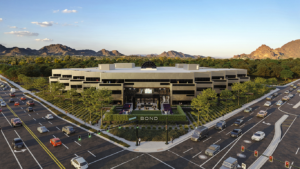A Growing Need for Multigenerational Housing
In recent years, more families have chosen to live together across multiple generations. Whether it’s adult children staying home longer due to rising housing costs, aging parents moving in for support, or extended family choosing to live under one roof, multigenerational living is becoming more common in modern cities.
This shift isn’t just a cultural or economic trend—it’s a response to real challenges in the housing market. High property prices, limited affordable housing, and the rising cost of elder care have all played a role. Yet beyond practicality, multigenerational living can also be a rich, fulfilling experience that brings families closer together and fosters deeper connections between age groups.
But for this model to truly work, the way we think about housing needs to evolve. Cities must find ways to design homes and communities that support shared living while also offering privacy, comfort, and flexibility.
LOCAL NEWS: 100 best places to work and live in Arizona for 2025
The Benefits of Multigenerational Living
Multigenerational living offers a range of benefits—not only to families but to communities and the broader housing market.
For families, it can ease financial strain. Sharing a mortgage or rent between generations helps reduce the cost burden on each individual. It also allows family members to support one another more easily. Parents can help with child care. Grandparents can remain engaged and active in daily family life. Adult children can assist aging relatives while building their own financial foundations.
From a social perspective, multigenerational households can reduce loneliness and improve mental health. Living with loved ones creates a built-in support system that many people, particularly seniors and single parents, may otherwise lack. This form of housing can also help preserve family traditions and promote cultural continuity.
At the community level, encouraging multigenerational living can lead to more stable neighborhoods, reduce the pressure on elder care services, and even lessen traffic congestion as more people work or care for others at home.
Designing for Shared Living
While the idea of multigenerational living is appealing, the reality can be difficult without the right kind of space. Traditional home designs, especially in cities, often don’t support the needs of three or more generations under one roof.
To address this, developers and city planners are beginning to explore more flexible housing options. These might include:
- Homes with Separate Suites: Designed with a self-contained unit for a grandparent or adult child, complete with a separate entrance, kitchenette, and bathroom.
- Dual Master Bedrooms: Larger homes with two main bedroom suites allow for greater privacy for both older and younger generations.
- Shared Common Areas: Open kitchens, dining rooms, and living spaces encourage time together, while private bedrooms and bathrooms give everyone space when they need it.
- Convertible Spaces: Rooms that can shift from an office to a bedroom or a den to a nursery help the home evolve as family needs change.
These thoughtful layouts promote harmony by balancing shared space and personal privacy.
Challenges in Urban Development
Urban areas face unique challenges when it comes to promoting multigenerational housing. Land is limited, and housing density is often prioritized over space and layout flexibility. In many cities, zoning laws don’t always support building larger homes with multiple suites or allow for detached units like laneway homes or garden suites.
Another challenge is affordability. While combining resources may help families afford a home together, the initial cost of buying or building a multigenerational home can be steep. This is especially true when retrofitting an older home or buying in a city with high property values.
To overcome these obstacles, cities can play a crucial role by updating zoning policies, encouraging flexible building codes, and incentivizing developers to consider multigenerational needs in new projects. Financial tools such as grants, tax breaks, or shared equity programs could also help make these homes more accessible.
Forward-Thinking Real Estate Leaders
Some leaders in the real estate industry are already responding to the shift toward multigenerational living. By taking a more human-centered approach to development, they’re finding ways to create housing that supports deeper connections between generations without compromising modern design and convenience.
Kris Thorkelson, a Winnipeg-based entrepreneur and real estate developer, believes that designing for people—not just profit—is key to sustainable growth in today’s housing market. In building Thorwin Properties, Thorkelson has emphasized not only quality housing but also resident well-being, recognizing that families come in all shapes and sizes. While his developments serve a wide range of tenants, the core focus on flexibility and service creates a strong foundation for multigenerational living.
The Role of Community Spaces
Multigenerational living extends beyond the walls of a single home. It also relies on the surrounding neighborhood and community. Parks, walking trails, libraries, and community centers all play a part in fostering relationships across age groups.
In fact, mixed-use neighborhoods—those that blend housing with shopping, healthcare, and recreation—are often best suited to support multigenerational families. When daily needs are within walking distance, and when public spaces are welcoming to both children and seniors, everyone benefits.
Some developments are beginning to incorporate these ideas more intentionally. Co-housing communities, for instance, blend private homes with shared amenities like kitchens, play areas, and gardens. These models can reduce isolation and create a true sense of belonging.
Looking Ahead
As cities continue to grow and change, the need for thoughtful, inclusive housing will only become more pressing. Multigenerational living is not just a return to the way things once were—it’s a smart, forward-looking solution to today’s urban challenges.
It encourages stronger families, more resilient communities, and a more efficient use of housing resources. And with the right mix of policy support, innovative design, and leadership in real estate, this model can thrive.
Entrepreneurs like Kris Thorkelson are proving that it’s possible to build not just housing, but homes—places where every generation can feel safe, valued, and supported. By putting people at the center of development, we can create cities that meet today’s needs and tomorrow’s possibilities.
Final Thoughts
In the end, multigenerational living is about more than just sharing a space—it’s about sharing a life. When we build with that in mind, we don’t just bridge generations—we build bridges to stronger, more connected communities.




